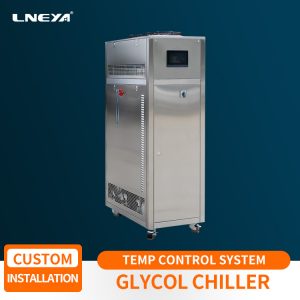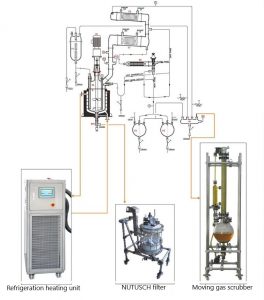Betriebsanleitung für die Tieftemperaturprüfkammer
Die Tieftemperatur-Prüfkammer is a necessary test equipment in aviation, automobile, household appliances, scientific research and other fields. It is used to test and determine the parameters and performance of electrical, electronic and other products and materials after the temperature environment changes in high temperature, low temperature, or constant test.
Die Tieftemperatur-Prüfkammer can be used to check and determine the temperature cycling changes of electrical, electronic products or materials, and produce the adaptability of storage and use under environmental conditions. The equipment adopts forced air circulation to maintain the uniformity of temperature in the working room, with green environmental protection, micro-computer control, temperature digital display, adjustable temperature in the box, high-density insulation layer, good insulation effect, energy saving.
Die Tieftemperatur-Prüfkammer should never be used for testing the following objects or those containing them:
(1) Explosives:
1. Nitroglycol (ethylene glycol dinitrate), nitroglycerin (propylene glycol trinitrate), nitrocellulose and other explosive nitrates.
2. Trinitrobenzene, trinitrotoluene, trinitrophenol (picric acid) and other explosive nitro compounds.
3. Peracetic acid, methyl ethyl ketone peroxide, benzoyl peroxide and other organic peroxides.
(2) Combustibles:
1. Spontaneous combustion:
Metals: lithium, potassium, sodium, yellow phosphorus, phosphorus sulfide, red phosphorus.
Cerules: calcium carbide (calcium carbide), phosphatized lime, magnesium powder, aluminium powder, sodium bisulfite.
2. Categories of oxide properties:
(1) Potassium chlorate, sodium chlorate, ammonium chlorate and other chlorates.
(2) Potassium peroxide, sodium peroxide, ingot peroxide and other peroxide salts.
(3) Potassium peroxide, sodium peroxide, barium peroxide and other inorganic peroxides.
3. Flammables:
(1) Ether, gasoline, propylene oxide, carbon disulfide and other substances whose ignition point is less than – 30 C.
(2) Common ethane, oxidized alkene, acetone, benzene, methyl ethyl ketone and other substances whose ignition point is above – 30℃ but below 0℃.
4. Flammable gases:
Hydrogen, acetylene, ethylene, methane, ethane, propane, butane and other gases that may burn at 1 atmospheric pressure at 15 C.
Verwandte Empfehlungen
-
Detaillierte Einführung von luftgekühlten Kältemaschinen
1917LNEYA refrigeration has accumulated over 10years of cooling supporting application experience. According to differentapplication fields and service conditions, it has developed a variety of typesof cooling chillers, including air cooled c...
Details anzeigen -
Hochwertige professionelle Ausrüstung hilft dem Labor, unendlich viele Ergebnisse zu erzielen
2827In recent years, China's economy has continued to grow. Under the development opportunity of professional high and low temperature integrated machines, laboratory scientific and technological achievements are also in sustainable development. LNEYA...
Details anzeigen -
Was sind die Merkmale der Kältetechnik von Industriekühlern?
1746Besteht ein großer Temperaturunterschied zwischen Ein- und Auslasswasser, wird ein großer externer Tank zur Speicherung von Kaltwasser verwendet. In diesem Fall wird das Kühlwasser nicht direkt aus dem Kühler verwendet. Tief in die Außenseite des T...
Details anzeigen -
Die Existenz der Destillation und die Temperaturkontrolle während der Destillation - SUNDI dynamic temp. control
1512Destillation gibt es in Branchen wie der biopharmazeutischen und petrochemischen Industrie. Die Labordestillation umfasst die Vakuumdestillation, die Kurzwegdestillation, die Dünnschichtdestillation, die Wasserdampfdestillation, die Batch-Destillation, die azeotrope Dis...
Details anzeigen
 LNEYA Industriekühler Hersteller Lieferant
LNEYA Industriekühler Hersteller Lieferant













